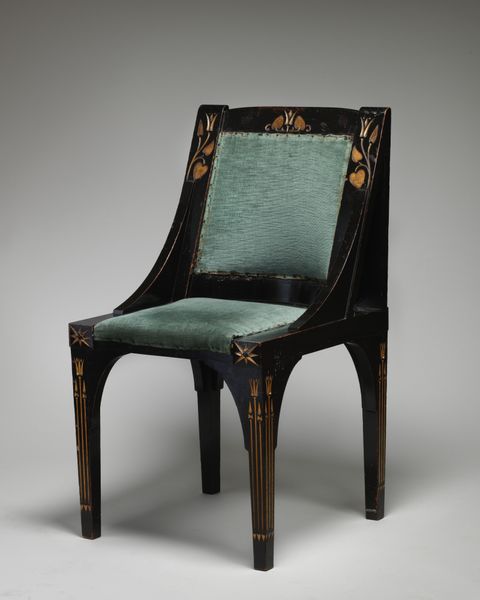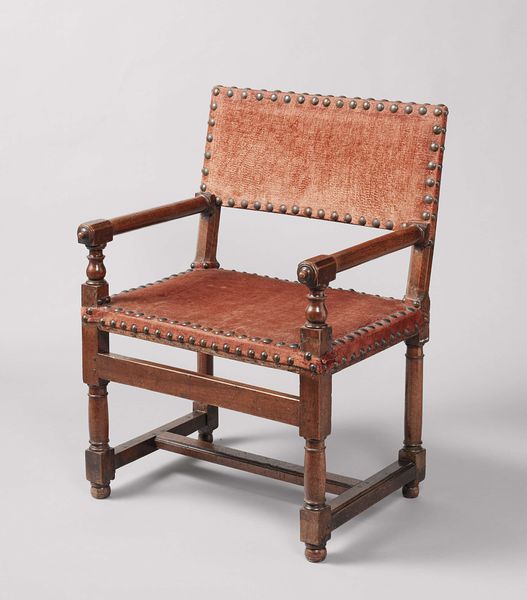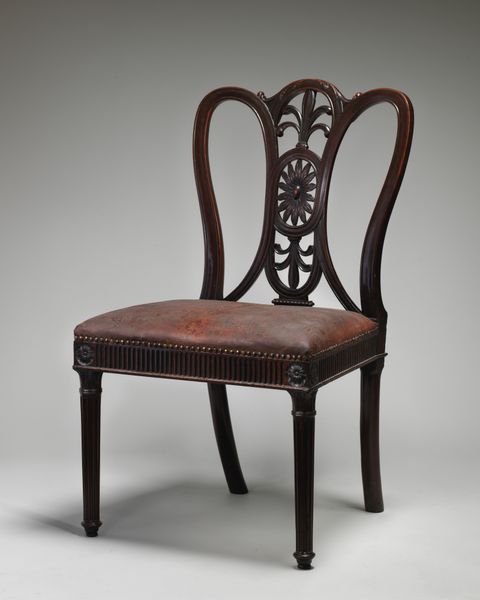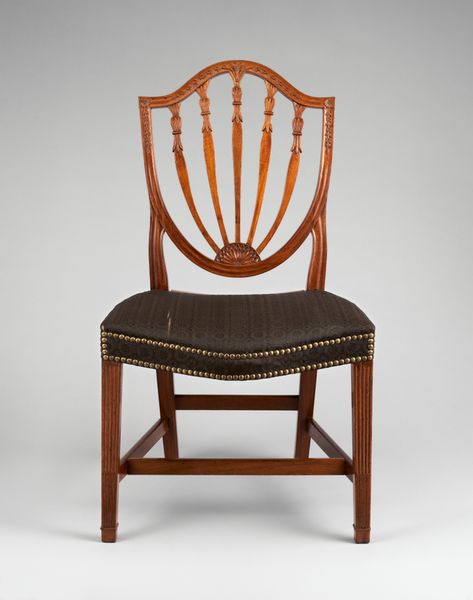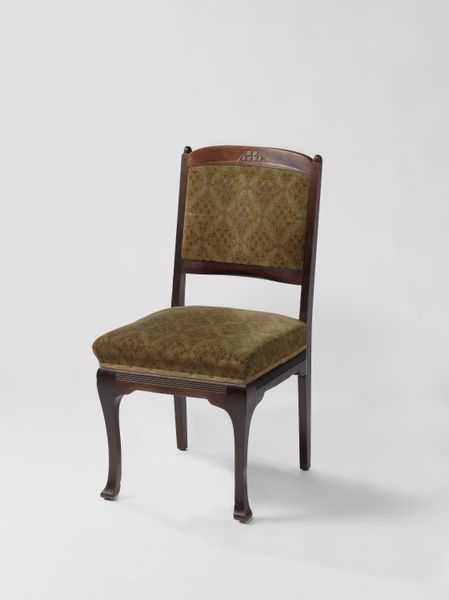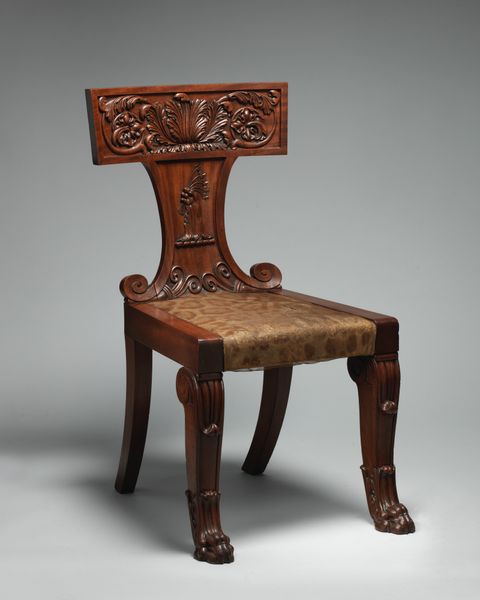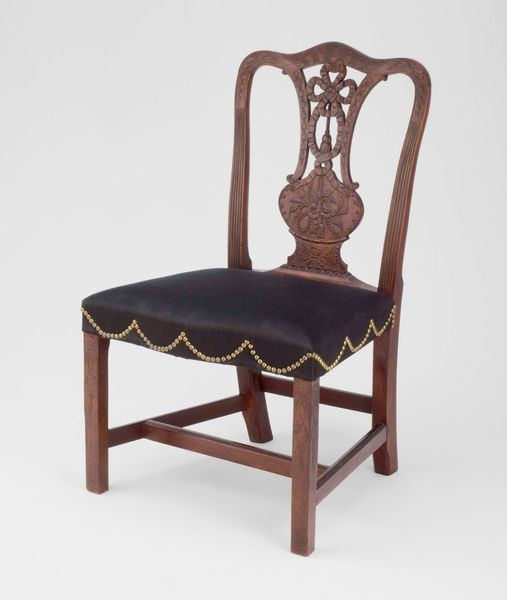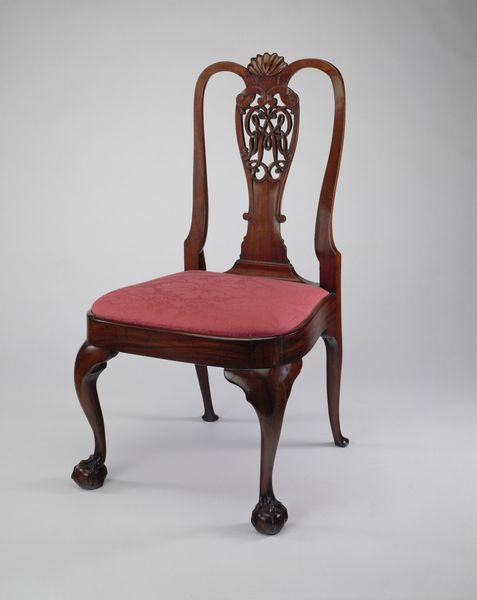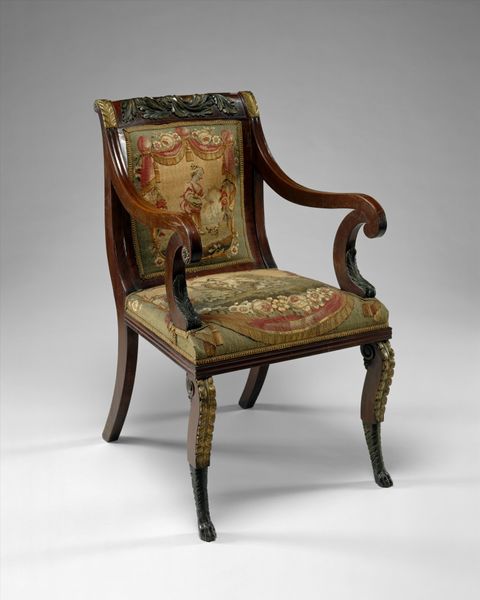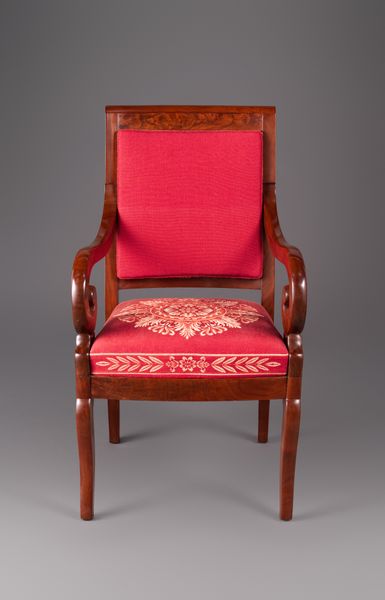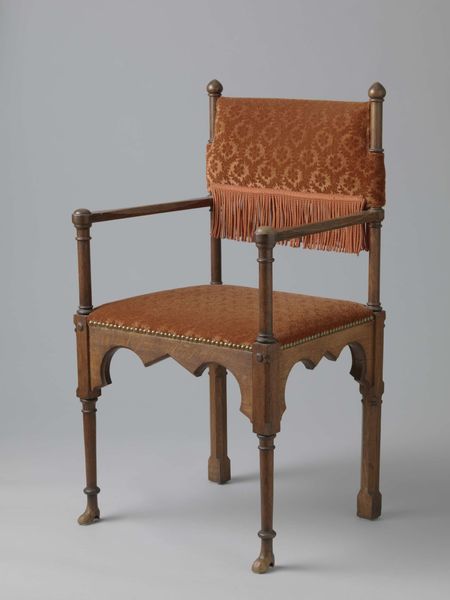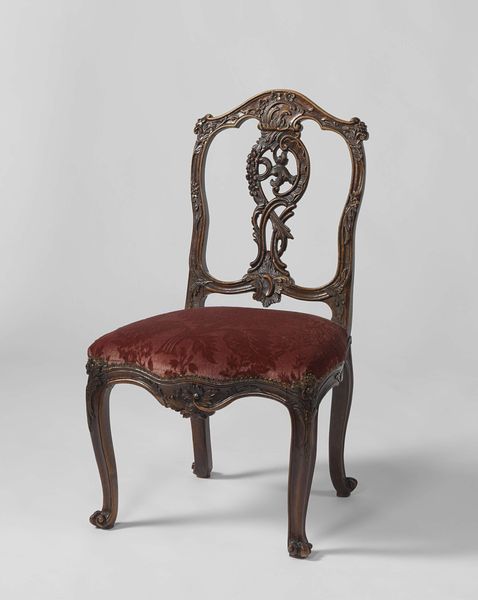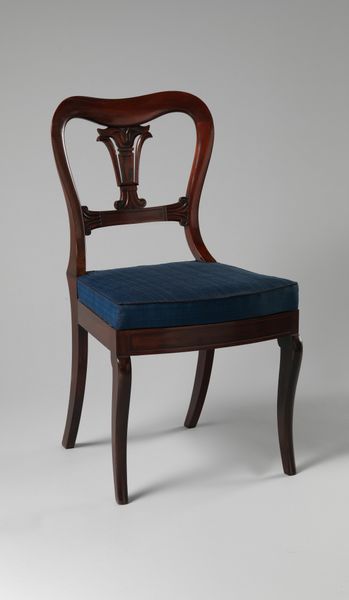
textile, wood
#
arts-&-crafts-movement
#
furniture
#
textile
#
form
#
wood
#
decorative-art
Dimensions: height 94.5 cm, width 66.0 cm, depth 57.5 cm, height 50.0 cm, width 50.0 cm, depth 44.0 cm, weight 15 kg
Copyright: Rijks Museum: Open Domain
Curator: The Arts and Crafts movement prized functionality and beauty in everyday objects, and this "Armchair" created around 1908 by Theo Nieuwenhuis, perfectly illustrates this principle. What’s your initial take on this piece? Editor: The chair’s geometric patterns and deep red textile evoke a sense of quiet contemplation. It looks less like mere furniture and more like a throne for someone lost in thought. Curator: Exactly! Think about how the Arts and Crafts movement rejected industrialization's dehumanizing effects. Each detail, from the wooden frame to the patterned textile, emphasizes handcrafted quality and the intrinsic value of design. How might we see this chair fitting into debates around gendered labor at the time? Editor: Given the period and the Arts and Crafts emphasis on textiles, one could certainly investigate the association of such domestic artistry with feminized labour, especially considering its intended use in domestic spaces of social gathering. The chair thus moves beyond being a mere object; it becomes a material site to negotiate complex historical attitudes. Curator: And Nieuwenhuis's blend of form and ornamentation becomes very relevant here! His artistic vision sought to integrate beauty into daily life, challenging class-based assumptions around who deserved aesthetically enriching surroundings. The socio-political context is undeniably integral to understanding the work. Editor: The choice of wood is telling; a subtle, democratic naturalism stands out among other ornamental flourishes favored by wealthier populations. This armchair also serves as a commentary on art’s potential accessibility as a function. Curator: It's pieces like this that challenge us to rethink the boundaries between fine art and functional design and make it imperative that we approach pieces such as Nieuwenhuis’s armchair with critical eyes sensitive to social and artistic undercurrents. Editor: Absolutely. Reflecting on this armchair, I realize it has more to tell us about early 20th-century aesthetics, craft labor, and democratic ideals than one might assume at first glance.
Comments
rijksmuseum about 2 years ago
⋮
This chair was part of the interior design of a private house on the Museumplein in Amsterdam. The occupant and commissioner was the tobacco wholesaler E.R. Harkema; his monogram EHR is carved in the wood of the seat’s front apron. Jan Mensing hand-printed the seat and back cover with a geometrical pattern of foliage and vine motifs.
Join the conversation
Join millions of artists and users on Artera today and experience the ultimate creative platform.

